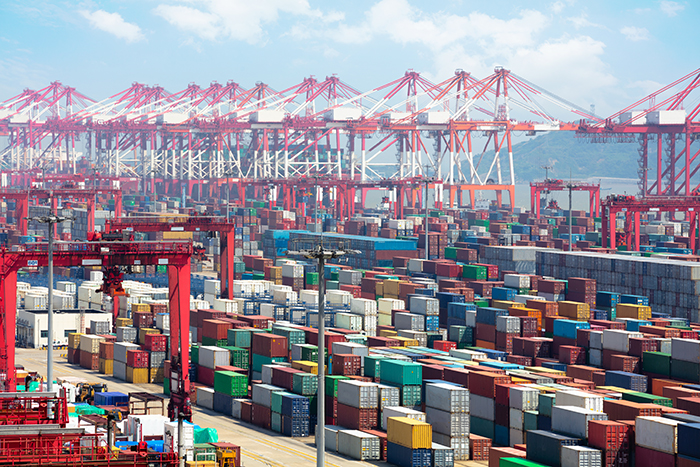



Article by: Hari Yellina
Shanghai finally gave the green light to a general resumption of business at historic speed after two months of strict epidemic controls, with sea and air port cargo volume, the key benchmark for the recovery of the international trading and manufacturing hub in the Yangtze River Delta, all rebounding to 90 percent of pre-epidemic levels within one week. Factory owners, traders, and logistic service providers were gearing up for production at breakneck speed even during the Dragon Boat Festival holidays as the megacity began to return to normal on June 1, with the shipment volume expected to reach a new peak over the next one to two weeks as the Christmas delivery period has just begun.
According to media reports, Shanghai Pudong International Airport, one of the world’s top three international air cargo hubs with three major international cargo integrators FedEx, DHL, and UPS, facilitated more than 200 cargo and mail flights per day during the three-day holidays, with the number of flights already reaching pre-epidemic levels. In terms of shipping, Shanghai Port’s daily container throughput, which is the world’s greatest in terms of container throughput, has exceeded 119,000 TEUs since June. Among these numbers, the daily export declaration volume at Shanghai’s Yangshan Port has surged by more than 50% to 11,000 orders, a considerable increase from the 7,000 orders during the city’s shutdown and control period.
Factory owners in Yiwu, East China’s Zhejiang Province, are working around the clock to provide in-demand Christmas goods to overseas markets, piggybacking on the commercial revival in Shanghai and the gradual relaxation of the entire region after the plague was mostly brought under control. Normally, the delivery period for Christmas items begins in April and ends in November, but this year’s cargo arrived a few weeks earlier than usual as traders fought off possible uncertainties posed by the virus, worldwide port congestion, particularly in the United States, and other factors. Cai Qinliang, secretary-general of Yiwu’s Industry Association of Christmas Supplies, told the Global Times on Monday that they began stockpiling items in March and have been taking and distributing them since then.
While some disruptions occurred during a period of stringent epidemic control across the region, with cargo trucks struggling to deliver supplies on time, Cai claims that the situation has largely improved since Shanghai loosened the restrictions. “Right now, our factories are stepping up their efforts, with employees working around the clock to supply items,” Cai said, adding that their Christmas-related cargo volume had outpaced the same period last year. According to shipping data firm Ship Valuation, congestion at Shanghai’s port is easing. Tankers, bulk carriers, and cargo ships had an average wait time of 34 hours at the end of May, down from 66 hours during the peak of the epidemic in late April, according to data.
According to a customer recall report released on Wednesday by Danish shipping company Maersk Line, the efficiency of truck movement in and out of Shanghai will progressively improve as the outbreak is controlled. Since the Dragon Boat Festival, which comes on June 3 this year, a Shanghai-based logistic service provider named Zhao has seen a stable scenario. Although the increase in orders was not yet visible, he predicted that it would reach a peak in approximately two weeks, owing to factories resuming operations and the supply of goods ranging from electric items such as home appliances to cars taking the lead.
“Unlike April and May, there are enough trucks and drivers accessible these days,” Zhao remarked. Zhao works in foreign commerce, assisting manufacturers in delivering items from factories to ports, a profession that is inextricably linked to the orders that companies place overseas, which analysts predict will take some time to fully recover. “Logistic services, including those related to the port, will resume in about a month,” Wu Minghua, a Shanghai-based experienced industry expert, told the Global Times on Monday. “However, it may take much longer for orders to return to a historic peak like in prior years.” Multiple factors including supply chain transportation, US port congestions and global inflation, would all cap the expectation for trade, experts noted.